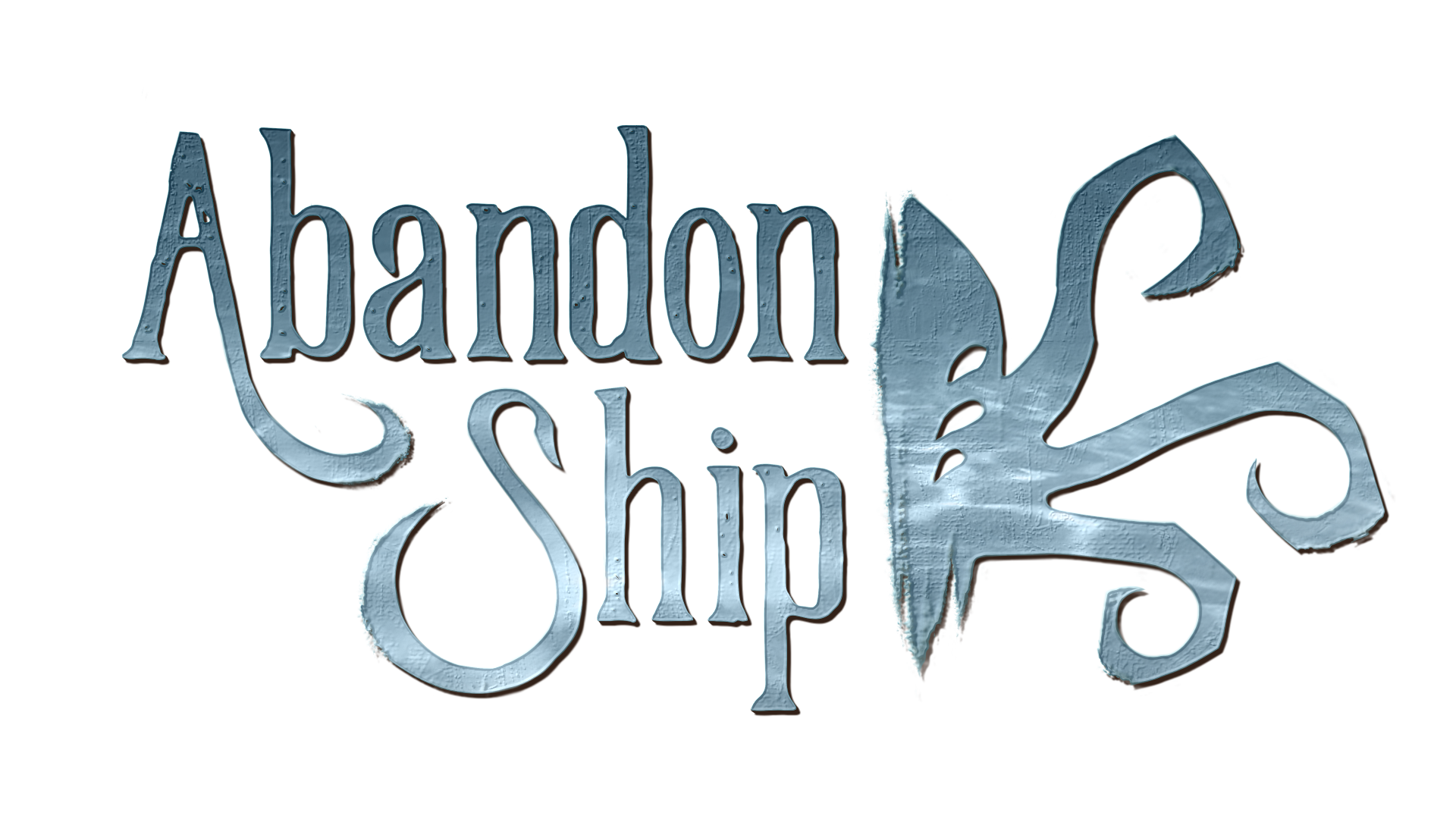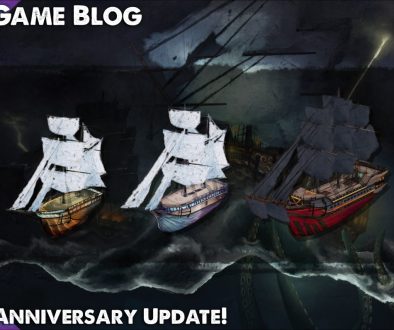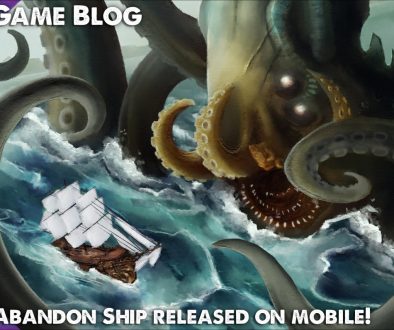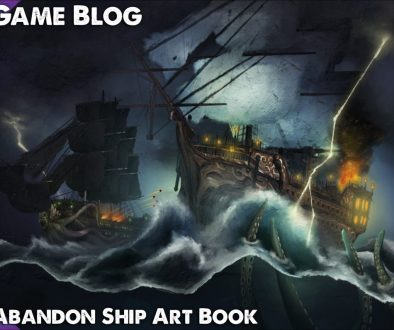In this post, our talented composer Aaron Miller will take us through how he writes music for games, with lots of reference to what he did specifically for Abandon Ship. Take it away, Aaron!
Game Music Writing
Writing music for games is a passion of mine! It’s extremely creative and highly rewarding. I have a small studio in my home, where I can record basic instruments and vocals. My setup is really aimed towards composing music using virtual instruments, this is done on a DAW (Digital Audio Workstation), or to put it simply, all written on a PC and software.
To be able to record the sound from your virtual instruments, you need to run them in a host piece of software. I use Cubase, but there are a number of equivalents such as Pro Tools, Logic, Reaper and Ableton. They all give similar results, so your choice will be influenced by how you want to work and the style of music you are writing.
For composing, there are a number of ways to achieve certain styles. For orchestral music, I use virtual instruments. These are usually samples of real instruments played back via midi. This way of writing classical music has been around for many years and recently the standard has become exceptional. Virtual instruments are by no means a replacement for live players, however it can be prohibitively expensive to record a full orchestral soundtrack. Usually, I mix together live instruments and virtual ones, which gives authentic results. I’ve played guitar for most of my life so I can generally play any guitar parts needed. Unfortunately, the same can’t be said for my violin playing skills!
Interpreting the Brief
There are ‘rules’ when it comes to writing music for games; some stylistic, some technical. These can be challenging, but it’s up to me as a Composer to interpret the brief and deliver what’s needed to work within the game.
A brief can be loose and high-level, such as “I want the music to sound a bit like this…”, or more detailed, such as “I only want to use these instruments, and those instruments need to be played in this style.”
For Abandon Ship we wanted something that felt appropriate for the tone of the game, as well as epic and orchestral. This resulted in a very large and punchy percussion as the backbone for dynamic combat music. For Exploration Mode we used laid pieces that evoked a sense of exploring the unknown.
Implementing the Music Assets
Once we have an artistic direction for the music, we work out how we are going to implement it into the game. That’s usually when I have a conversation with the Audio Designer about how the music relates to the gameplay. Do we make the music out of layers? Do we use loops? Are they full but small pieces of music that play out from start to finish?
For Abandon Ship, we went with a couple of techniques. For combat, we went with swapping loops during gameplay to accent specific moments, and for exploration, we would play set pieces that would play in full when certain events happen.
In the combat for Abandon Ship, the main body of music was made up of loops of varying intensity. These were Low, Mid and High. These loops would play continuously, and we would swap between them as the intensity level changed. This meant that the music would range from low intensity if there wasn’t much happening on-screen and the danger was low, through to large bombastic pieces as the battle naturally grew tenser. This resulted in the music dynamically changing to the events in combat, enhancing the sense of drama.
Below is an example of three level of intensities for combat. The first is low intensity. This would be played if the player had lots of health and the battle was starting:
Then, as the battle continued and the health of each ship was whittled down, it would shift into the medium intensity:
Finally, as the battle was reaching its climax, and the player ship was dangerously low on health, the high-level intensity would play:
The dynamic music system had to know when to shift intensity levels at the right point so that it sounded seamless, and we would also play short stingers to swap between them. Here is an example of one of those transitions between levels accentuated by a Stinger:
These stingers would also be used to accent small events such as a fire breaking out, or a hull crack appearing. Here are two examples of Stingers in isolation:
And an example of the Medium Intensity music with those Stingers playing over the top:
During a battle, there would also be larger events that needed to be acknowledged, such as a huge tidal wave incoming and crashing over the ships. For those events we used what is called ‘highlights’. These are short, 4 bar pieces that would play instead of the main loops, and were suitably dramatic to match on-screen events. Here is an example of a Highlight:
And here is an example of that highlight playing along with the Medium Intensity combat loop:
Exploration music was more straightforward. We didn’t need complex pieces of music being played, we just needed to convey the feeling of the event that was being triggered. These were short but full pieces triggered at certain times. That meant there was no constant music like there was in combat. Sometimes silence, combined with occasional pieces can be more effective.
We knew that in Exploration Mode, we would need to convey positive, negative and neutral emotions to match the events in-game, so we wrote the music for this accordingly. This Positive piece would play, for example, if you discovered a port:
While this negative example would play if something bad happened due to an event:
Neutral music would play occasionally when discovering something of interest, like a special island:
We also needed suitable music for when the player was chased by the Kraken or was exploring a dangerous area. These ‘tension’ pieces were simple loops of music that would crossfade between two intensity levels to rachet up the feeling of tension when needed. Here is the most basic level:
This would move up to a second level if the tension needed to increase:
Here is an example of them working together, increasing as the danger gets closer:
You should now have a sense of how game music is built up from constituent parts, and how that combines to create something dynamic and evocative. The music for the combat and exploration gameplay had different requirements, so we had to design the system before writing the music. Getting a good handle on how you are technically going to implement the music into a game can save many a headache later in development!
Writing Music for Trailers
When it comes to composing music for trailers, you’re writing to fit what is happening on screen (often referred to as ‘writing to picture’). This is a very different discipline to loop writing and while it has far less technical requirements, it is in some ways more creatively limiting. The footage will have events happening that you have to highlight with the musical score at the precise moment. This means it is ideal to receive a time-locked edit of the trailer, as otherwise the smallest change makes all of the music out of sync. I often find that for Trailers, my Beats-Per-Minute and/or time signatures play a much larger part in my writing.
One of the videos where this really came to the fore was the trailer that announced our release date. This had text that appeared to match a specific BPM, with camera cuts to show glimpses of gameplay that were heralded by an explosive sound effect. The idea was to build a sense of drama and excitement that finished with the date being unveiled. We went for a count of four beats for each piece of text, and because the trailer was built around the music to such a degree it was a particularly fun challenge. Here is the trailer so you can hear the finished result:
Encore!
Really this is just scratching the surface of how to compose music for games, each section could have its own blog dedicated to it! Hopefully, you found this overview interesting though, especially if you’ve considered game music as a potential career.
Aaron
You can get the Abandon Ship Soundtrack on Steam now:






